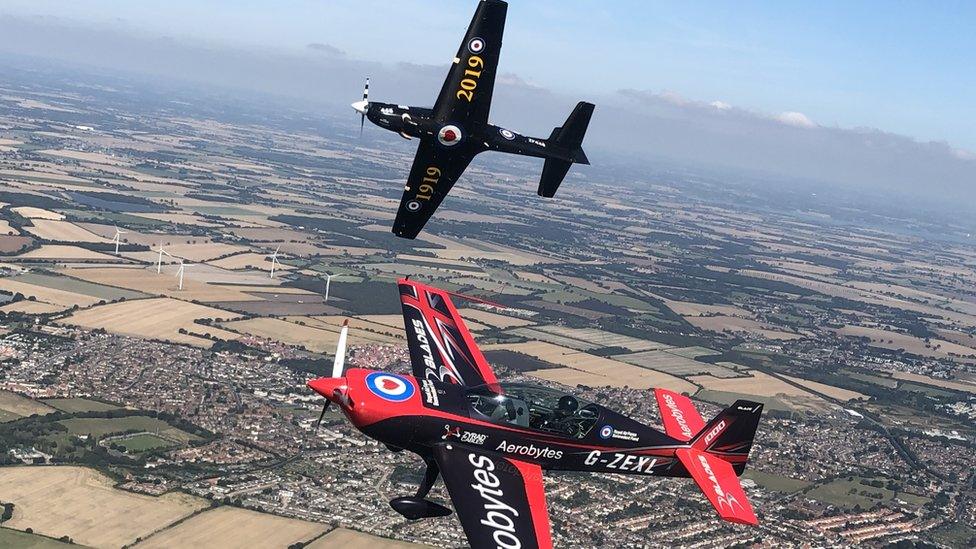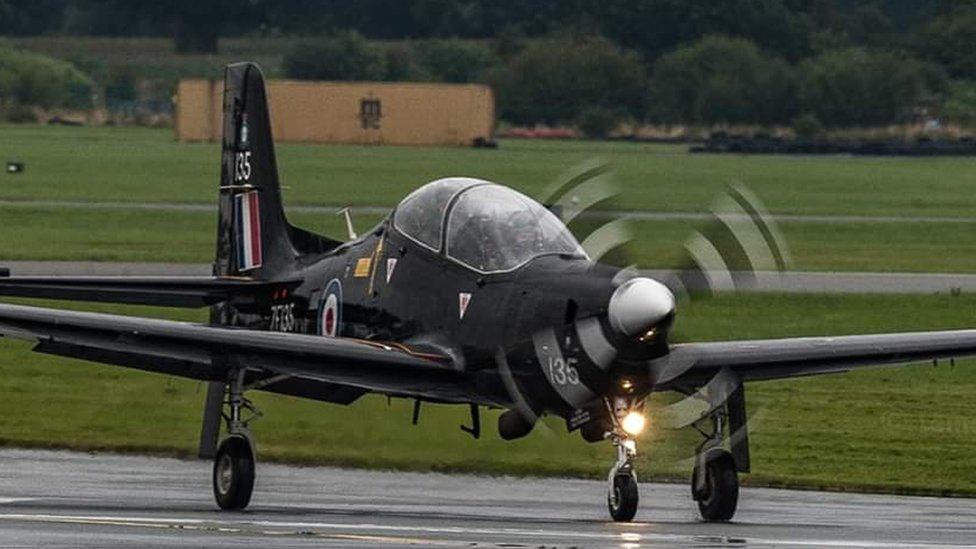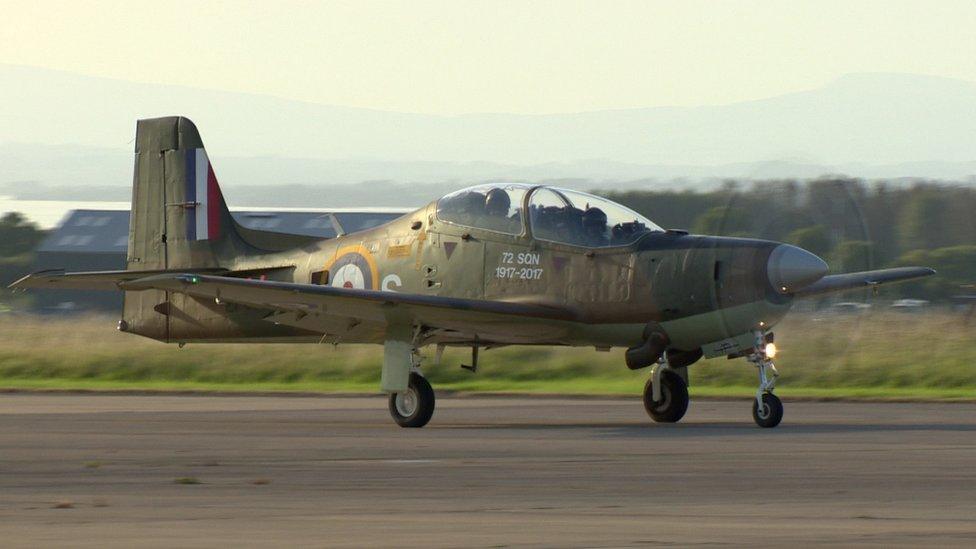RAF bids final farewell to Tucano training plane
- Published

The Tucano (top) has been taking part in air shows across the UK this year
It has been used to train generations of pilots and navigators, including the Duke of Cambridge, but the Tucano T1 will make its final public appearance this weekend.
The aircraft will retire from RAF service next month after 30 years.
All the RAF's fast jet pilots will have taken to the skies in the Tucano as part of their training.
Its last public appearance will be at the Southport air show which runs from 6 to 8 September.
Training on the Tucano was principally carried out at RAF Linton-on-Ouse, in North Yorkshire, and the station is due to close in 2020.
The Red Arrows' longest-serving pilot, Sqn Ldr Mike Ling, retired from the RAF after 21 years earlier this year.
He is now a pilot with the Blades aerobatic display team and this weekend will be flying alongside the Tucano at Southport.
He trained on the plane in the late 1990s, before transferring to RAF Valley in Anglesey to complete his training on the Hawk T1.

Mike Ling described the Tucano as the "perfect all-rounder"
He was then selected to return to RAF Linton-on-Ouse and the Tucano to train other pilots.
"I would never have done anything different. It was fantastic," Mike said.
In training terms he said the plane was a "big jump" as it has a tandem cockpit - so the trainer would sit behind the trainee rather than side by side.
"It's quite a big jump, you are in a turbo-prop and wearing an oxygen mask," Mike said.
"You have to develop a new way of communicating, it's quite what I loved about it."


The RAF ordered around 130 Tucanos
What is the Tucano?
The Tucano T Mark 1 provides basic fast jet training to RAF and RN aircrew
It was built by the Shorts factory in Belfast in a joint venture with Brazilian aerospace company Embraer
130 were built for the RAF
Is flown by 72 Squadron with No. 1 Flying Training School, at RAF Linton-on-Ouse
Formation flying, low-level navigation, poor weather flying and aerobatic handling are all taught on the aircraft
It has a length of 32ft 4¼in (9.86m), a height of 11ft 1¾in (3.40m) and a wingspan of 37ft (11.28m)
It entered service with the Central Flying School at RAF Scampton, for trials, in June 1988
Will be replaced by the Texan II based at RAF Valley in Wales
Source: Ministry of Defence


Training on the Tucano was mainly carried out at RAF Linton-on-Ouse
You may also be interested in:
Mike said a trainee pilot would spend about 120 hours flying in it and described the aircraft as the "perfect all-rounder".
"It was very capable, you could take it into places you couldn't with any other RAF plane.
"It was a good way of honing skills and offered a good test of airmanship and capacity."

Follow BBC Yorkshire on Facebook, external, Twitter, external and Instagram, external. Send your story ideas to yorkslincs.news@bbc.co.uk, external.
- Published26 September 2017
